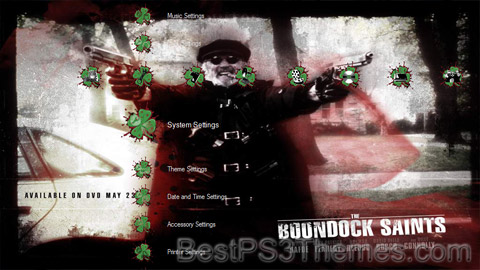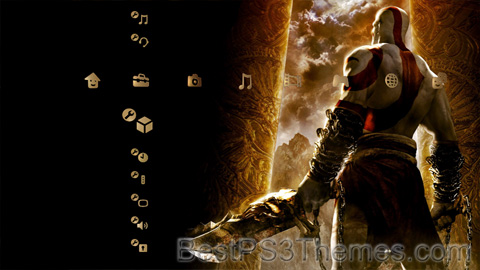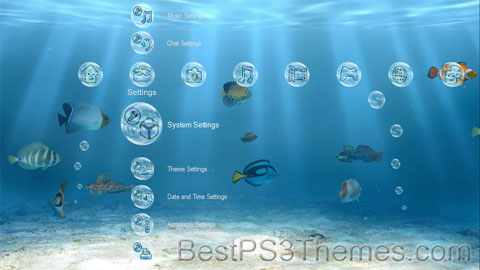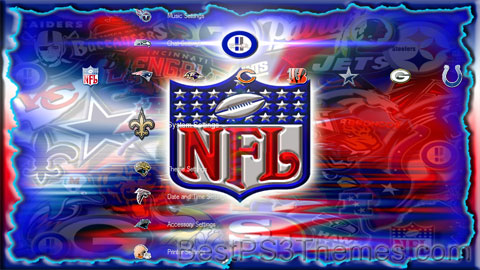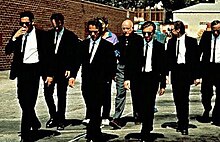Windows XP theme by Andy Smith
Download: WinXp.p3t
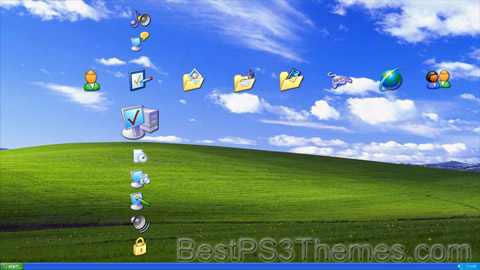
(3 backgrounds)
| Version of the Windows NT operating system | |
 Screenshot of Windows XP running the Luna visual style, showing the start menu, taskbar, and My Computer window | |
| Developer | Microsoft |
|---|---|
| Source model | |
| Released to manufacturing | August 24, 2001[2] |
| General availability | October 25, 2001[2] |
| Final release | Service Pack 3 (5.1.2600.7701) / April 19, 2019[3] |
| Marketing target | Consumer and Business |
| Update method | |
| Platforms | IA-32, x86-64, and Itanium |
| Kernel type | Hybrid (NT) |
| Userland |
|
| License | Proprietary commercial software |
| Preceded by |
|
| Succeeded by | Windows Vista (2007) |
| Official website | Windows XP (archived at Wayback Machine) |
| Support status | |
| Excludes Itanium and some embedded editions: Mainstream support ended on April 14, 2009.[4] Extended support ended on April 8, 2014.[4] Exceptions existed until April 9, 2019, see § Support lifecycle for details. | |
| Part of a series of articles on |
| Windows XP |
|---|
| Siblings |
Windows XP is a major release of Microsoft's Windows NT operating system. It was released to manufacturing on August 24, 2001, and later to retail on October 25, 2001. It is a direct upgrade to its predecessors, Windows 2000 for high-end and business users and Windows Me for home users, and is available for any devices running Windows NT 4.0, Windows 98, Windows 2000, or Windows Me that meet the new Windows XP system requirements.
Development of Windows XP began in the late 1990s under the codename "Neptune", built on the Windows NT kernel and explicitly intended for mainstream consumer use. An updated version of Windows 2000 was also initially planned for the business market. However, in January 2000, both projects were scrapped in favor of a single OS codenamed "Whistler", which would serve as a single platform for both consumer and business markets. As a result, Windows XP is the first consumer edition of Windows not based on the Windows 95 kernel or MS-DOS. Windows XP removed support for PC-98, i486 and SGI Visual Workstation 320 and 540 and will only run on 32-bit x86 CPUs and devices that use BIOS firmware.
Upon its release, Windows XP received critical acclaim, noting increased performance and stability (especially compared to Windows Me), a more intuitive user interface, improved hardware support, and expanded multimedia capabilities. Windows XP and Windows Server 2003 were succeeded by Windows Vista and Windows Server 2008, released in 2007 and 2008, respectively. However, some criticisms of Windows XP were its security issues at launch, and many people believed their anti-piracy schemes had gone too far.
Mainstream support for the main Windows XP ended on April 14, 2009, and extended support ended on April 8, 2014. Windows Embedded POSReady 2009, based on an embedded version of Windows XP Professional, was the last supported version of Windows based on the Windows XP codebase, and received security updates until April 2019. Prior to the main Windows XP's end of support date, unofficial methods were made available to apply the updates to other editions of Windows XP. Microsoft has discouraged this practice, citing compatibility issues. Extended support for Windows Embedded POSReady 2009 ended on April 9, 2019, marking the overall end of the Windows XP codebase after 18 years.[5]
Five years since the end of Windows XP's overall support date including the extended support of Windows Embedded POSReady 2009 (as of 2024), a large majority of PCs in Armenia still appear to be running Windows XP.[6][7] Few have also had some significant share, such as Colombia. As of 2024[update], globally, under 0.6% of Windows PCs[8] and 0.1% of all devices across all platforms continued to run Windows XP.
Development[edit]
In the late 1990s, initial development of what would become Windows XP was focused on two individual products: "Odyssey", which was reportedly intended to succeed the future Windows 2000 and "Neptune", which was reportedly a consumer-oriented operating system using the Windows NT architecture, succeeding the MS-DOS-based Windows 98.[9]
However, the projects proved to be too ambitious. In January 2000, shortly prior to the official release of Windows 2000, technology writer Paul Thurrott reported that Microsoft had shelved both Neptune and Odyssey in favor of a new product codenamed "Whistler", named after Whistler, British Columbia, as many Microsoft employees skied at the Whistler-Blackcomb ski resort.[10] The goal of Whistler was to unify both the consumer and business-oriented Windows lines under a single, Windows NT platform. Thurrott stated that Neptune had become "a black hole when all the features that were cut from Windows Me were simply re-tagged as Neptune features. And since Neptune and Odyssey would be based on the same code-base anyway, it made sense to combine them into a single project".[11]
At PDC on July 13, 2000, Microsoft announced that Whistler would be released during the second half of 2001, and also unveiled the first preview build, 2250, which featured an early implementation of Windows XP's visual styles system and interface changes to Windows Explorer and the Control Panel.[12]
Microsoft released the first public beta build of Whistler, build 2296, on October 31, 2000. Subsequent builds gradually introduced features that users of the release version of Windows XP would recognize, such as Internet Explorer 6.0, the Microsoft Product Activation system and the Bliss desktop background.[13]
Whistler was officially unveiled during a media event on February 5, 2001, under the name Windows XP, where XP stands for "eXPerience".[14]
Release[edit]
In June 2001, Microsoft indicated that it was planning to spend at least US$1 billion on marketing and promoting Windows XP, in conjunction with Intel and other PC makers.[15] The theme of the campaign, "Yes You Can", was designed to emphasize the platform's overall capabilities. Microsoft had originally planned to use the slogan "Prepare to Fly", but it was replaced because of sensitivity issues in the wake of the September 11 attacks.[16]
On August 24, 2001, Windows XP build 2600 was released to manufacturing (RTM). During a ceremonial media event at Microsoft Redmond Campus, copies of the RTM build were given to representatives of several major PC manufacturers in briefcases, who then flew off on decorated helicopters. While PC manufacturers would be able to release devices running XP beginning on September 24, 2001, XP was expected to reach general, retail availability on October 25, 2001. On the same day, Microsoft also announced the final retail pricing of XP's two main editions, "Home" (as a replacement for Windows Me for home computing) and "Professional" (as a replacement for Windows 2000 for high-end users).[17]
New and updated features[edit]
User interface[edit]
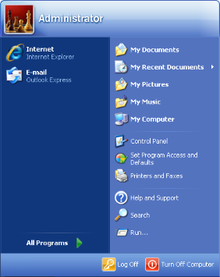
While retaining some similarities to previous versions, Windows XP's interface was overhauled with a new visual appearance, with an increased use of alpha compositing effects, drop shadows, and "visual styles", which completely changed the appearance of the operating system. The number of effects enabled are determined by the operating system based on the computer's processing power, and can be enabled or disabled on a case-by-case basis. XP also added ClearType, a new subpixel rendering system designed to improve the appearance of fonts on liquid-crystal displays.[18] A new set of system icons was also introduced.[19] The default wallpaper, Bliss, is a photo of a landscape in the Napa Valley outside Napa, California, with rolling green hills and a blue sky with stratocumulus and cirrus clouds.[20]
The Start menu received its first major overhaul in XP, switching to a two-column layout with the ability to list, pin, and display frequently used applications, recently opened documents, and the traditional cascading "All Programs" menu. The taskbar can now group windows opened by a single application into one taskbar button, with a popup menu listing the individual windows. The notification area also hides "inactive" icons by default. A "common tasks" list was added, and Windows Explorer's sidebar was updated to use a new task-based design with lists of common actions; the tasks displayed are contextually relevant to the type of content in a folder (e.g. a folder with music displays offers to play all the files in the folder, or burn them to a CD).[21]
Fast user switching allows additional users to log into a Windows XP machine without existing users having to close their programs and log out. Although only one user at the time can use the console (i.e., monitor, keyboard, and mouse), previous users can resume their session once they regain control of the console.[22] Service Pack 2 and Service Pack 3 also introduced new features to Windows XP post-release, including the Windows Security Center, Bluetooth support, Data Execution Prevention, Windows Firewall, and support for SDHC cards that are larger than 4 GB and smaller than 32 GB.[23][24][25][26]
Infrastructure[edit]
Windows XP uses prefetching to improve startup and application launch times.[27] It also became possible to revert the installation of an updated device driver, should the updated driver produce undesirable results.[28]
A copy protection system known as Windows Product Activation was introduced with Windows XP and its server counterpart, Windows Server 2003. All Windows licenses must be tied to a unique ID generated using information from the computer hardware, transmitted either via the internet or a telephone hotline. If Windows is not activated within 30 days of installation, the OS will cease to function until it is activated. Windows also periodically verifies the hardware to check for changes. If significant hardware changes are detected, the activation is voided, and Windows must be re-activated.[29][clarification needed]
Networking and internet functionality[edit]
Windows XP was originally bundled with Internet Explorer 6, Outlook Express 6, Windows Messenger, and MSN Explorer. New networking features were also added, including Internet Connection Firewall, Internet Connection Sharing integration with UPnP, NAT traversal APIs, Quality of Service features, IPv6 and Teredo tunneling, Background Intelligent Transfer Service, extended fax features, network bridging, peer to peer networking, support for most DSL modems, IEEE 802.11 (Wi-Fi) connections with auto configuration and roaming, TAPI 3.1, and networking over FireWire.[30] Remote Assistance and Remote Desktop were also added, which allow users to connect to a computer running Windows XP from across a network or the Internet and access their applications, files, printers, and devices or request help.[31] Improvements were also made to IntelliMirror features such as Offline Files, roaming user profiles and folder redirection.[32]
Backwards compatibility[edit]
To enable running software that targets or locks out specific versions of Windows, "Compatibility mode" was added. It allows pretending a selected earlier version of Windows to software, starting at Windows 95.[33] This feature was first introduced in Windows 2000 Service Pack 2, released five months before the release of Windows XP, and was backported from prerelease Windows XP builds. Unlike with Windows XP, however, it was not enabled by default and had to be manually activated through the Register Server utility and was only available to administrator users.[34] Windows XP has this feature activated out of the box and also grants it to regular users.
Other features[edit]
- Improved application compatibility and shims compared to Windows 2000.[35]
- DirectX 8.1, upgradeable to DirectX 9.0c.[36]
- A number of new features in Windows Explorer including task panes, thumbnails, and the option to view photos as a slideshow.[37]
- Improved imaging features such as Windows Picture and Fax Viewer.[38]
- Faster start-up, (because of improved Prefetch functions) logon, logoff, hibernation, and application launch sequences.[27]
- Numerous improvements to increase the system reliability such as improved System Restore,[39] Automated System Recovery,[40] and driver reliability improvements through Device Driver Rollback.[41]
- Hardware support improvements such as FireWire 800,[42] and improvements to multi-monitor support under the name "DualView".[43]
- Fast user switching.[44]
- The ClearType font rendering mechanism, which is designed to improve text readability on liquid-crystal display (LCD) and similar monitors, especially laptops.[18]
- Side-by-side assemblies[45] and registration-free COM.[46]
- General improvements to international support such as more locales, languages and scripts, MUI support in Terminal Services, improved Input Method Editors, and National Language Support.[47]
Removed features[edit]
Some of the programs and features that were part of the previous versions of Windows did not make it to Windows XP. Various MS-DOS commands available in its Windows 9x predecessor were removed,[48] as were the POSIX and OS/2 subsystems.[49]
In networking, NetBEUI, NWLink and NetDDE were deprecated and not installed by default.[50] Plug-and-play–incompatible communication devices (like modems and network interface cards) were no longer supported.[51]
Service Pack 2 and Service Pack 3 also removed features from Windows XP, including support for TCP half-open connections[52] and the address bar on the taskbar.[53]
Editions[edit]
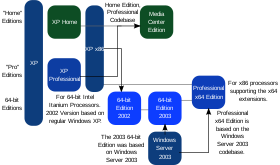
Windows XP was released in two major editions on launch: Home Edition and Professional Edition. Both editions were made available at retail as pre-loaded software on new computers and as boxed copies. Boxed copies were sold as "Upgrade" or "Full" licenses; the "Upgrade" versions were slightly cheaper, but require an existing version of Windows to install. The "Full" version can be installed on systems without an operating system or existing version of Windows.[15] The two editions of XP were aimed at different markets: Home Edition is explicitly intended for consumer use and disables or removes certain advanced and enterprise-oriented features present on Professional, such as the ability to join a Windows domain, Internet Information Services, and Multilingual User Interface. Windows 98 or Me can be upgraded to either edition, but Windows NT 4.0 and Windows 2000 can only be upgraded to Professional.[54] Windows' software license agreement for pre-loaded licenses allows the software to be "returned" to the OEM for a refund if the user does not wish to use it.[55] Despite the refusal of some manufacturers to honor the entitlement, it has been enforced by courts in some countries.[56]
Two specialized variants of XP were introduced in 2002 for certain types of hardware, exclusively through OEM channels as pre-loaded software. Windows XP Media Center Edition was initially designed for high-end home theater PCs with TV tuners (marketed under the term "Media Center PC"), offering expanded multimedia functionality, an electronic program guide, and digital video recorder (DVR) support through the Windows Media Center application.[57] Microsoft also unveiled Windows XP Tablet PC Edition, which contains additional pen input features, and is optimized for mobile devices meeting its Tablet PC specifications.[58] Two different 64-bit editions of XP were made available. The first, Windows XP 64-Bit Edition, was intended for IA-64 (Itanium) systems; as IA-64 usage declined on workstations in favor of AMD's x86-64 architecture, the Itanium edition was discontinued in January 2005.[59] A new 64-bit edition supporting the x86-64 architecture, called Windows XP Professional x64 Edition, was released in April 2005.[60]
Microsoft also targeted emerging markets with the 2004 introduction of Windows XP Starter Edition, a special variant of Home Edition intended for low-cost PCs. The OS is primarily
Gurren-Lagann
Carbon
Carbon theme by Tiberius
Download: Carbon.p3t
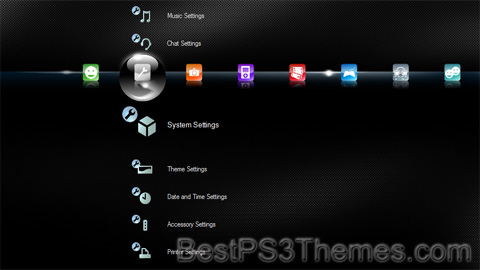
(1 background)
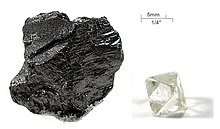 Graphite (left) and diamond (right), two allotropes of carbon | ||||||||||||||||||||||||||||||||||||||||||||||||||||||||||||||
| Carbon | ||||||||||||||||||||||||||||||||||||||||||||||||||||||||||||||
|---|---|---|---|---|---|---|---|---|---|---|---|---|---|---|---|---|---|---|---|---|---|---|---|---|---|---|---|---|---|---|---|---|---|---|---|---|---|---|---|---|---|---|---|---|---|---|---|---|---|---|---|---|---|---|---|---|---|---|---|---|---|---|
| Allotropes | graphite, diamond and more (see Allotropes of carbon) | |||||||||||||||||||||||||||||||||||||||||||||||||||||||||||||
| Appearance |
| |||||||||||||||||||||||||||||||||||||||||||||||||||||||||||||
| Standard atomic weight Ar°(C) | ||||||||||||||||||||||||||||||||||||||||||||||||||||||||||||||
| Carbon in the periodic table | ||||||||||||||||||||||||||||||||||||||||||||||||||||||||||||||
| ||||||||||||||||||||||||||||||||||||||||||||||||||||||||||||||
| Atomic number (Z) | 6 | |||||||||||||||||||||||||||||||||||||||||||||||||||||||||||||
| Group | group 14 (carbon group) | |||||||||||||||||||||||||||||||||||||||||||||||||||||||||||||
| Period | period 2 | |||||||||||||||||||||||||||||||||||||||||||||||||||||||||||||
| Block | p-block | |||||||||||||||||||||||||||||||||||||||||||||||||||||||||||||
| Electron configuration | [He] 2s2 2p2 | |||||||||||||||||||||||||||||||||||||||||||||||||||||||||||||
| Electrons per shell | 2, 4 | |||||||||||||||||||||||||||||||||||||||||||||||||||||||||||||
| Physical properties | ||||||||||||||||||||||||||||||||||||||||||||||||||||||||||||||
| Phase at STP | solid | |||||||||||||||||||||||||||||||||||||||||||||||||||||||||||||
| Sublimation point | 3915 K (3642 °C, 6588 °F) | |||||||||||||||||||||||||||||||||||||||||||||||||||||||||||||
| Density (near r.t.) | graphite: 2.266 g/cm3[3][4] diamond: 3.515 g/cm3 amorphous: 1.8–2.1 g/cm3 | |||||||||||||||||||||||||||||||||||||||||||||||||||||||||||||
| Triple point | 4600 K, 10,800 kPa[5][6] | |||||||||||||||||||||||||||||||||||||||||||||||||||||||||||||
| Heat of fusion | graphite: 117 kJ/mol | |||||||||||||||||||||||||||||||||||||||||||||||||||||||||||||
| Molar heat capacity | graphite: 8.517 J/(mol·K) diamond: 6.155 J/(mol·K) | |||||||||||||||||||||||||||||||||||||||||||||||||||||||||||||
| Atomic properties | ||||||||||||||||||||||||||||||||||||||||||||||||||||||||||||||
| Oxidation states | −4, −3, −2, −1, 0, +1,[7] +2, +3,[8] +4[9] (a mildly acidic oxide) | |||||||||||||||||||||||||||||||||||||||||||||||||||||||||||||
| Electronegativity | Pauling scale: 2.55 | |||||||||||||||||||||||||||||||||||||||||||||||||||||||||||||
| Ionization energies |
| |||||||||||||||||||||||||||||||||||||||||||||||||||||||||||||
| Covalent radius | sp3: 77 pm sp2: 73 pm sp: 69 pm | |||||||||||||||||||||||||||||||||||||||||||||||||||||||||||||
| Van der Waals radius | 170 pm | |||||||||||||||||||||||||||||||||||||||||||||||||||||||||||||
| Other properties | ||||||||||||||||||||||||||||||||||||||||||||||||||||||||||||||
| Natural occurrence | primordial | |||||||||||||||||||||||||||||||||||||||||||||||||||||||||||||
| Crystal structure | graphite: simple hexagonal (hP4) | |||||||||||||||||||||||||||||||||||||||||||||||||||||||||||||
| Lattice constants | a = 246.14 pm c = 670.94 pm (at 20 °C)[3] | |||||||||||||||||||||||||||||||||||||||||||||||||||||||||||||
| Crystal structure | diamond: face-centered diamond-cubic (cF8) | |||||||||||||||||||||||||||||||||||||||||||||||||||||||||||||
| Lattice constant | a = 356.707 pm (at 20 °C)[3] | |||||||||||||||||||||||||||||||||||||||||||||||||||||||||||||
| Thermal expansion | diamond: 0.8 µm/(m⋅K) (at 25 °C)[10] | |||||||||||||||||||||||||||||||||||||||||||||||||||||||||||||
| Thermal conductivity | graphite: 119–165 W/(m⋅K) diamond: 900–2300 W/(m⋅K) | |||||||||||||||||||||||||||||||||||||||||||||||||||||||||||||
| Electrical resistivity | graphite: 7.837 µΩ⋅m[11] | |||||||||||||||||||||||||||||||||||||||||||||||||||||||||||||
| Magnetic ordering | diamagnetic[12] | |||||||||||||||||||||||||||||||||||||||||||||||||||||||||||||
| Molar magnetic susceptibility | diamond: −5.9×10−6 cm3/mol[13] | |||||||||||||||||||||||||||||||||||||||||||||||||||||||||||||
| Young's modulus | diamond: 1050 GPa[10] | |||||||||||||||||||||||||||||||||||||||||||||||||||||||||||||
| Shear modulus | diamond: 478 GPa[10] | |||||||||||||||||||||||||||||||||||||||||||||||||||||||||||||
| Bulk modulus | diamond: 442 GPa[10] | |||||||||||||||||||||||||||||||||||||||||||||||||||||||||||||
| Speed of sound thin rod | diamond: 18,350 m/s (at 20 °C) | |||||||||||||||||||||||||||||||||||||||||||||||||||||||||||||
| Poisson ratio | diamond: 0.1[10] | |||||||||||||||||||||||||||||||||||||||||||||||||||||||||||||
| Mohs hardness | graphite: 1–2 diamond: 10 | |||||||||||||||||||||||||||||||||||||||||||||||||||||||||||||
| CAS Number |
| |||||||||||||||||||||||||||||||||||||||||||||||||||||||||||||
| History | ||||||||||||||||||||||||||||||||||||||||||||||||||||||||||||||
| Discovery | Egyptians and Sumerians[14] (3750 BCE) | |||||||||||||||||||||||||||||||||||||||||||||||||||||||||||||
| Recognized as an element by | Antoine Lavoisier[15] (1789) | |||||||||||||||||||||||||||||||||||||||||||||||||||||||||||||
| Isotopes of carbon | ||||||||||||||||||||||||||||||||||||||||||||||||||||||||||||||
| ||||||||||||||||||||||||||||||||||||||||||||||||||||||||||||||





